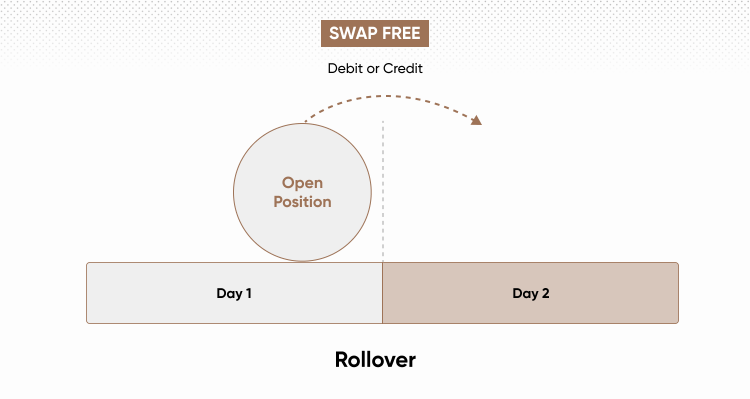In the world of forex trading, where currencies are constantly exchanging hands across borders, the concept of swap fees plays a crucial role in shaping the profitability of traders’ positions. Swap fees, also known as rollover fees or overnight financing rates, arise from the difference in interest rates between the two currencies involved in a currency pair. These fees are charged daily whenever a trader holds a position overnight, impacting both short-term and long-term trading strategies.

Image: capital.com
Understanding swap fees is essential for forex traders to manage their portfolios effectively and avoid costly surprises. In this comprehensive guide, we will delve into the intricacies of swap fees, exploring their mechanics, implications, and strategies for mitigating their impact on trading outcomes.
The Mechanics of Forex Swap Fees
Swap fees are calculated based on the respective short-term interest rates of the currencies in a currency pair. The difference between these rates is known as the swap rate, which is either positive or negative. If the swap rate is positive, it indicates that the trader will receive a payment from the broker. Conversely, if the swap rate is negative, the trader will incur a fee.
The swap rate is typically determined by the following formula:
Swap Rate = (Interest Rate of Base Currency – Interest Rate of Quote Currency) ÷ 360
For example, suppose you hold a long position in the EUR/USD currency pair. The current short-term interest rate for the euro (base currency) is 0.50%, while the short-term interest rate for the US dollar (quote currency) is 1.00%. In this scenario, the swap rate would be:
(0.50% – 1.00%) ÷ 360 = -0.00139%
As the swap rate is negative, you would incur a small fee for holding the position overnight.
Implications of Swap Fees on Forex Trading
Swap fees have significant implications for forex traders, affecting both their profit potential and risk management strategies:
Impact on Profitability:
Swap fees can erode the profitability of a trade over time, especially if the position is held for an extended period. Traders need to consider the impact of swap fees on their overall account balance, particularly when trading currency pairs with significant interest rate differentials.

Image: www.youtube.com
Short-Term Trading Strategies:
In short-term trading strategies, where traders close their positions within the same trading day, swap fees are typically negligible. However, in instances where positions are held for slightly longer periods, such as overnight, the compounded effect of swap fees can become noticeable.
Long-Term Trading Strategies:
For long-term trading strategies, swap fees can significantly impact profitability. Traders holding positions for weeks or months might find their profits eaten away by the daily accumulation of swap fees. Careful consideration must be given to swap rates when selecting currency pairs for long-term trades.
Mitigating the Impact of Swap Fees
While swap fees cannot be entirely avoided, there are several strategies that traders can employ to mitigate their impact on their trading outcomes:
Choose Currency Pairs with Low Interest Rate Differentials:
Selecting currency pairs with smaller interest rate differentials can help reduce the burden of swap fees. For example, trading pairs within the G10 group (major developed economies) often exhibit lower swap rates compared to emerging market pairs.
Manage Position Size:
Proper position sizing is crucial to limit potential losses from swap fees. Traders should carefully calculate their position size based on their risk tolerance and account balance, ensuring that they have sufficient capital to cover any potential swap fees.
Utilize Swap-Free Accounts:
Some forex brokers offer swap-free accounts, which relieve traders from paying or receiving swap fees on trades held overnight. However, these accounts may come with other limitations or conditions, such as higher spreads, so it’s essential to carefully review the terms before opting for a swap-free account.
Close Positions Before the Trading Day Ends:
Closing positions before the trading day ends, typically 5 PM EST, can help avoid paying swap fees. This strategy is particularly beneficial for short-term traders who are not holding positions overnight.
What Is Swap Fee In Forex
Conclusion
Swap fees are an integral aspect of forex trading, and traders must have a thorough understanding of their mechanics and implications to maximize their trading success. By carefully considering the impact of swap fees on their strategies and employing appropriate mitigation techniques, traders can optimize their positions, protect their profits, and navigate the challenges of the forex market with confidence.






